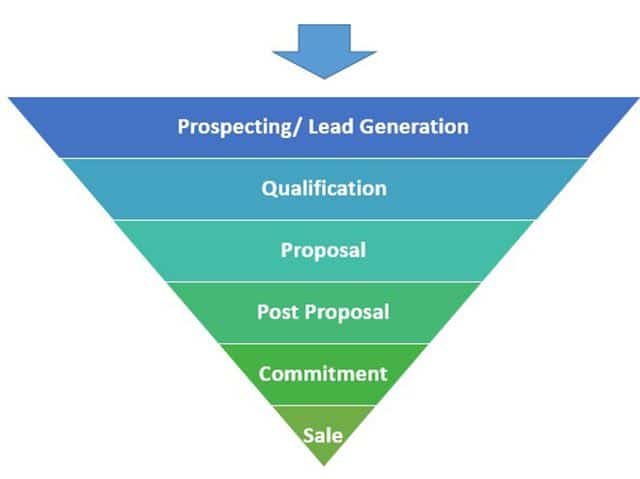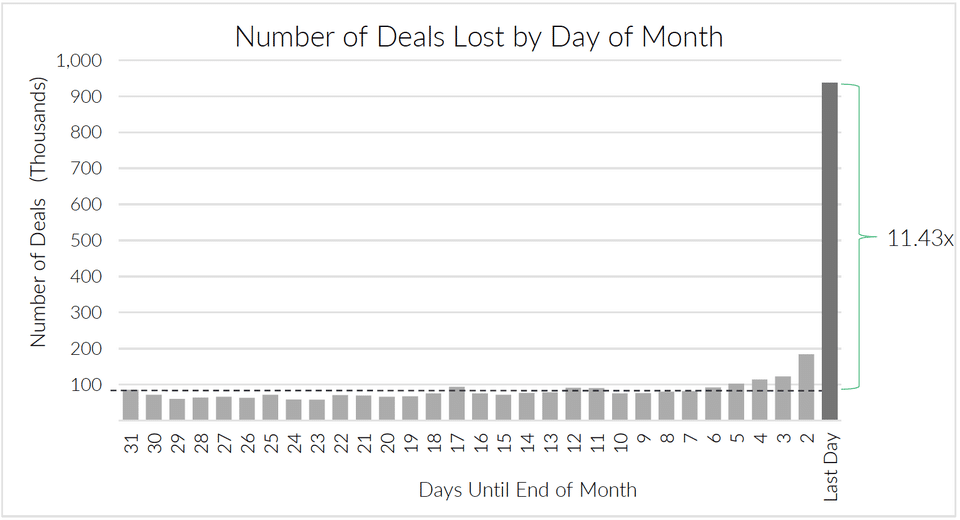By the time the end of the quarter rolls around, salespeople across the world look for ways to reach their quota. Hopefully, by the time the next deadline arrives, you’ve reached your sales goal and don’t have to scramble to put deals together. However, that’s not always realistic for everyone. To help you out, we’re beginning a three-part crunch-time series that looks into best practices for salespeople to use in order to finish the quarter off with a bang and inch closer to their yearly quota.
Find targeted new accounts and upgrade to Crunchbase Pro to help close out your quarter
The first part of this series will focus on effective time management and sales prospecting. The status of your current pipeline will be a major factor in how you budget your time at the end of the quarter. As such, it’s important to identify what stage in the sales process each of your prospects fits in to.
Fuel your sales prospecting efforts and identify targeted sales accounts
You probably also have some leads that dried out over the course of the year that can be rekindled. There may still be some legwork to do, but prioritizing your time effectively between the two groups, group 1 and group 2, can be the difference in reaching your sales goal and falling short.
Time management tips for salespeople
Knowing when and where to focus your efforts can be tricky; especially when the end of the year is approaching. The ways that you nurture deals in Q4 can be different from the rest of the year. Not only because you want to reach your sales goals but also because prospects may have budgets that must be spent before the end of the year.
Not sure where to begin? Take a deep breath, pour yourself some coffee, and follow these three time management tips.
Is your pipeline top-heavy or bottom-heavy?
Take a look at the current deals in your sales pipeline and determine whether the majority of unclosed sales in your funnel are near closing (towards the bottom of your pipeline) or if they are predominantly unvetted prospects (towards the top of your pipeline). Ideally, your sales pipeline is bottom-heavy with prospects close to converting.
You are less likely to acquire a new customer in Q4, so be sure to put an emphasis on trying to close the prospects near the bottom of your pipeline.
Segment your schedule to match your pipeline distribution
Once you’ve determined the breakdown of your pipeline – let’s say it’s 50% deals that are one meeting away from a proposal, 25% prospects and the remaining 25% falls in-between – segment your calendar to mimic this breakdown. Spend half of your time on getting meetings to finalize proposals, a quarter of your time reaching out to prospects, and the remaining 25% on following up with the goal of moving them into the proposal stage.
Now, while the number of deals is one way to break down your sales funnel, the value of those deals is important too. If you have a large deal that will bring you significantly closer to your quota, do your best to close it. Don’t only depend on a few high-value deals, though, to make your quota. It is better to extend your reach as much as possible to ensure that you have other options should those large deals not work out.
Managing open deals
When looking to close open deals prior to year’s end, first consider why a deal hasn’t closed yet. Determine if it’s because of something internal with a potential customer or if it’s something you can control. Focus on the deals that you have control over.
Maybe you didn’t follow up, or the prospect doesn’t fully understand your value proposition, or maybe you need to schedule a demo. Use these as opportunities to restart the conversation and progress your sale.
Delays caused by the prospective customer could be beyond your control. Factors like staff changes or budgetary issues could be why a deal isn’t progressing through your sales funnel. If that’s the case, still reach out and see if they’re any closer to making a purchase, but don’t waste too much energy on this group at this time.
Refrain from being overly pushy with slow-moving prospects. A study conducted by InsideSales.com shows that due to overly aggressive sales techniques at the end of a month, companies can lose 11.4x more prospects forever than normal.
How do I move a deal to closed-won?
Once you’ve identified why a deal is still open, you can then strategize how to close the sales deal. Leverage notes from your previous meetings to refresh yourself on the history of your interactions and what gaps your product or service fills for the potential customer. The deal could be open because they’re not comfortable enough with your product, they may still be evaluating vendors, or it could be that you never actually asked for the sale.
Whatever the situation, these tips can help jumpstart your deal closing:
- Reframe your original sales pitch to align with a prospect’s needs for the new year
- Offer a discount to incentivize a purchase decision
- Look to up-sell or cross-sell existing clients
- Ask for client referrals to generate qualified leads
- Provide case studies or testimonials to ease prospect concerns
How Crunchbase Pro can help you find new prospects
Circumstances can change at a company quickly. From personnel shuffling to increased funding, trigger events can turn a cold prospect into a hot lead in no time at all. With Crunchbase Pro, you can quickly research the prospects in your pipeline to make the most of your limited time at the end of the year. Use Crunchbase Pro filters and marketplace apps to quickly assess your prospects and give you the information you need to start closing deals in Q4.
In part two of the crunchtime blog series, we’ll focus on sales prospecting techniques and how to rank and prioritize them.









